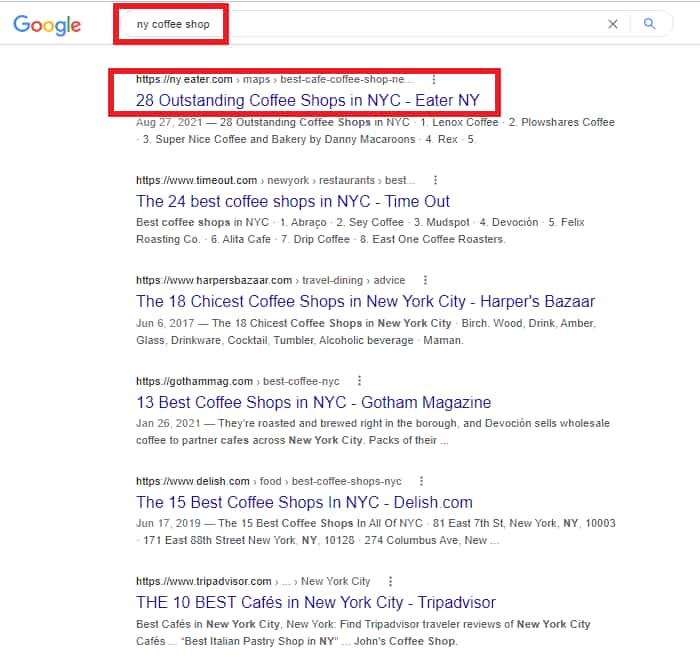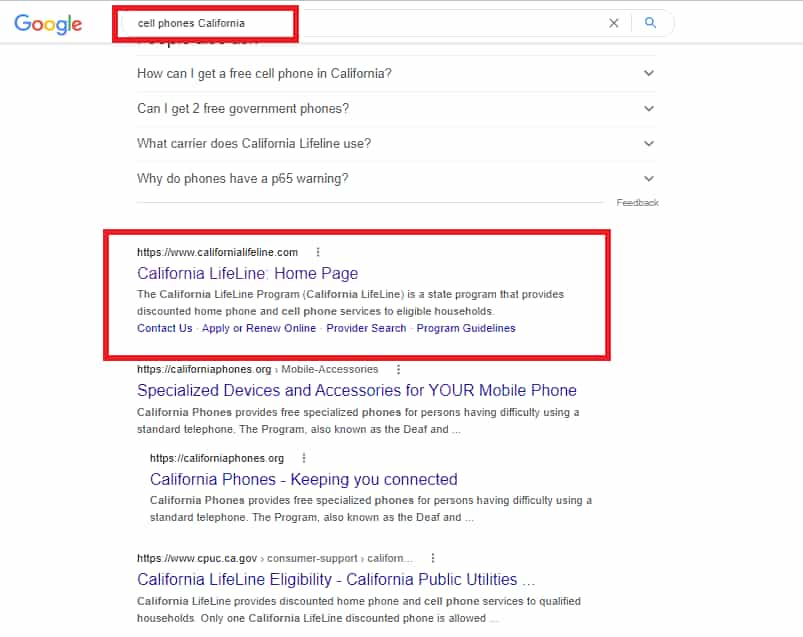How Semantic SEO Can Strengthen Your Online Reputation
Today’s Internet space provides numerous opportunities for companies and entrepreneurs to elevate their brand reputations. To stand out in today’s online environment, your brand must be recognizable and trustworthy.
The customer-centric approach should be performed in digital marketing, PR strategy, and promotional campaigns. Your task is to build a sound brand reputation with an inspiring story and utilize all the available tools focused on your brand equity.
“If you don’t give the market the story to talk about, they’ll define your brand’s story for you.”
-David Brier
Semantic SEO will complement your customer-driven marketing and public relations and lead to better brand reception. This is a process of optimizing your content for a topic instead of a keyword or a certain phrase (word combination). Semantic SEO is used to steer search engines in the right direction and put content in the top SERPs.
What is semantic SEO?
Semantic search engine optimization or semantic SEO is the way to create content based on user intent, as opposed to building keywords-based content. If your SEO strategy includes semantic search-driven strategies, Google will be able to recognize your website content and on-page entities faster based on the relevancy to searchers’ queries.
Semantic SEO produces highly relevant content that appears on:
- Knowledge panels
- Featured snippets
- Search carousels
- Other sections based on search results best-matching users’ queries.
This way you will be able to help Google identify your content contextually and prove the fact that your website, brand, and entities meet search queries.
It makes semantic search engine optimization extremely necessary for your brand reputation. With the help of semantic-driven strategies and SEO, you can build more efficient communication channels with potential and standing consumers while introducing your brand online. There are other reasons why semantics figure largely in search engine optimization:
- Search engine results become more accurate with semantic SEO
- Voice search is becoming more and more popular, and it has a mostly semantic nature
- Multiple-keyword (based on semantics with synonymization and LSI) optimization brings more traffic
Semantic SEO for your reputation
Semantic SEO is about the consumer-centric approach because it helps your target audience know more about your brand, company, goods, and services. People do not think about what keyword to use in the search box while trying to find something of interest. Usually, searchers just type a question they would like to get the answer to.
So as not to miss your potential consumer, use semantic search engine optimization as part of your SEO strategy. Google algorithm BERT was introduced in 2019. It uses the concept of intent understanding and conversation search context. Together with these factors, today’s semantic search is based on :
- Regional and age-specific variations
- Location
- Demographics and niche-focused aspects
It means that your optimization strategies should be developed according to all these fundamentals essential for semantic search. Additionally, your task is to demonstrate that your brand relates to searchers’ demands. This way you will catch the attention of more people and boost your brand reputation (because your company or services will appear in the top search positions due to semantics).
For example, if a user is searching Nokia smartphones and enters this query, the official Nokia website appears in the top search results.
Let’s take a look at one more example. Let us assume that the searcher asks Google about coffee shops in New York. The search query is “NY coffee shop.” We do not pay attention to advertised websites because paid ad campaigns are far from semantic SEO. You have probably already noticed that all the organic results provide a list of the best coffee shops, which indicates how Google understands the user intent of this query.
Take a closer look at Google’s suggestion with the Eater company’s website.
It offers a list of the most attractive coffee shops in New York. The website has picked the best coffee shops in New York and this is what the user intent was. Website visitors are able to read a description of the recommended places and get information about their social media accounts, location, etc. And because Eater offers a user intent-driven list and all the needed details, it increases the reputation of the company as a trustworthy source.
These companies most likely use semantics for their SEO strategy. It elevates their brand reputation while showing their coffee shops among the first that pop up in search results. To boost your brand perception on the Internet and build solid public relations, follow 5 main semantic SEO tactics:
- Contextual approach and semantics
- Create high-quality content
- Optimize for featured snippet
- Use structured data
- Add internal and external links
Contextual approach and semantics
It is worth noting that Google’s algorithms work contextually with a focus on search intent. It means that the query “trendy clothes” will be identified as “fashionable outfit” and similar word combinations. That is why you need to take a closer look at the topics and subtopics to tailor your website according to the semantic search.
While optimizing your content and creating keyword lists, do not forget about relevancy because it is a high-priority principle. Due to the fact that Google understands semantics better today, it does not focus just on the main keywords but also explores synonyms and LSI key phrases.
For example, if you sell wooden furniture, do not be limited to a “wooden furniture shop.” Add some relevant synonyms like “store,” “oak,” “stools,” “chairs,” “wood,” “pine,” “handcrafted,” etc. Here is an example where synonyms are used in the metadata but the companies are in the top SERPs.
Speaking about LSI (latent semantic indexing), these words and word combinations will help your website to achieve 100% topical relevance. For example, when the content is about flights, do not forget to use the most relevant phrases to the topic like:
- Tickets
- Traveling
- Business trip
- Low-cost
- Booking
- Business-class
- Europe/the USA/Asia
- Cheap
- International
- Cross-country
- Discounts
This way you will demonstrate to search engines that your site is about international or cross-country flights with budget-friendly tickets, and so on. Remember that relevancy is the main focus of semantic SEO writing. When Google considers your website relevant to queries, your brand reputation is boosted through high rankings and trust in your company.
Create high-quality content
Your brand reputation depends on the usefulness of information you provide searchers. That is why the best content is not too wordy but substantive, unique, and helpful for the target audience. As was mentioned before, focus on the search intent first. This way you will not only hit top SERPs but catch the attention of potential consumers easier and faster.
Determine what type of information you are going to offer on your website. There are three options to choose from:
- Informational content (guides, how-to texts, tips)
- Transactional (product pages)
- Navigational (review pages, pricing pages, etc.)
Remember that your keywords and search intent can change from stage to stage in your funnel. For example, if the user is searching cell phones to buy, add transactional keywords, LSI, and pieces of content (buy, purchase, store, etc.). The more accurate the search results are, the lower your lead appears in the sales funnel to be converted. The faster the conversion is, the better your brand reputation.
For example, the California LifeLine website offers a transactional search result, but for cell phone and stationary telephone services. It is likely that a user will leave the site immediately if they are not interested in the options provided by the phone companies in CA. If a searcher needs to buy smartphones in California instead of telephone services, no conversion will take place.
Optimize for featured snippet
Semantic search is impossible without the featured snippet. With the help of the featured snippet, search engines identify the most relevant websites with detailed answers and explanations according to the topic and subtopics. Furthermore, you have more chances to boost your brand’s reputation and land on the list of top sites.
Here is a range of recommendations to make your featured snippets even more efficient for SEO and your online brand perception:
- Use FAQ in your niche. Tailor the featured snippets according to the most asked questions. Provide algorithms, detailed answers, and how-to tips to be more precise and well-understood by users and search engines.
- Use more approaches for content formatting when possible. Tables, bullets, and numbered lists are imperative for your semantic SEO strategy.
- Use the most popular questions in the headings and provide relevant answers. Your content structure can be built just on the FAQ template (question+answer).
Use structured data
Structured data is the unified code that is used to describe information presented on your website pages. With the help of the structured data markup, search engines understand and organize your content better. In the context of semantic SEO, structured data is helpful for:
- Adapting your website to voice search.
- Hooking your website up with rich snippets.
- Making the website snippet social media-friendly.
This way structured data (Schema) allows Google to recognize your content better and make your website look more attractive in the SERPs. Boost your brand reputation with the help of the rich snippets that are about extended search results and might improve your organic CTR. As a result, you get more clicks and a higher probability to appear in the Knowledge Graph through valid structure data.
Add internal and external links
Semantic search also depends on internal links and backlinks. Your brand reputation will be boosted with proper internal linking because UX is improved this way. The navigation on the website becomes faster, so internal linking helps readers to search any piece of on-page content easier. Another beneficial feature of internal links is that they help search engines to crawl your site better.
Your task is to create a well-thought-out internal link structure for improved navigation and website crawlability. Pay attention to the menu and breadcrumb link structure, together with the structure of internal links in the articles.
Additionally, do not forget about backlinks. They are essential to force search engines to understand your content better. Pay attention to the link-building strategy to elevate the brand reputation and online performance of your business. Google will see the relevancy of your content to the queries with the help of backlinks and push your website to the suggested search results.
Final thoughts
Brand reputation is always about the customers’ trust and loyalty. That is why it is critically important to build real cohesion with your target audience. Focused attention should be paid to your brand’s online reputation because it results in first-rate public relations and business expansion with the help of word-of-mouth.
To improve public perception on the Internet and be ready for the long run on the modern market, build the online strength of your brand using the cohesive approach to digital marketing and SEO strategy. Semantic search engine optimization is an essential tool for managing brand reputation and ever-growing online competition.
Tags: Business Reputation Marketing, Reputation Management, Reputation Marketing.







